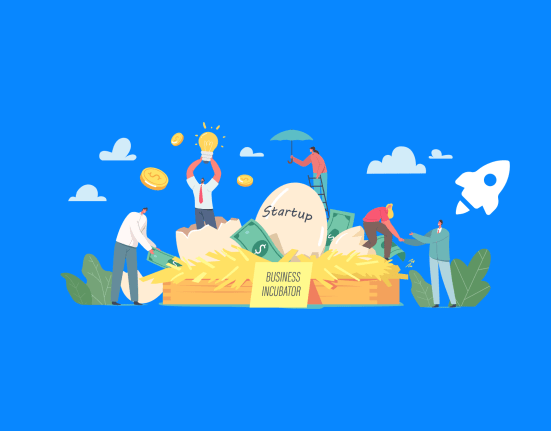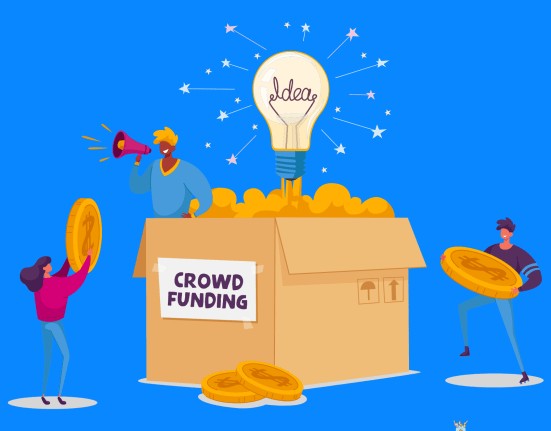According to a report by Zippia, an average human visits more than 100 web pages per day. This comes to around 3000 web pages per month per person. Wait, there’s more: According to Siteefy, the internet adds more than 250,000 web pages every day. The World Wide Web is all about websites and web pages. Who builds those? Web developers. What do they have? Web development skills, front-end developer skills, and various other coding skills.
In this article, I’m going to answer a question that has been answered a zillion times. But there is something different. This article has learning resources and projects handpicked for you. Shall we start?
The Basics of Web Development
We all know what web development is and how it is the first choice of every rookie developer. But why is that? Because it’s easy to start, learn, and excel. Plus, they get to see their development results from day one. Moreover, web development pays good money.
Web development is an umbrella term that includes everything involved in creating websites. To talk more, it can be divided into broad categories: front-end and back-end.
Front-End Development:
This is the visible part of a website that users interact with directly. It involves building the user interface using HTML, CSS, and JavaScript. Front-end developers focus on creating an appealing and user-friendly design.
Most of the newbies build their front-end developer skills first. Why? Because it is the most straight-forward and easy-to-start career option.
Back-End Development:
The back end of a website powers the functionality that happens behind the scenes. It involves server-side scripting, databases, and handling user data. Back-end developers make sure that everything works seamlessly on the technical side.
As expected, the count of newbie developers doing back-end is much less than front-end. Yet, back-end development is one of the best and highest-paying career options.
Now, in this article, I’m going to talk about web development skills in sequence. Let’s start with front-end developer skills and then move to back-end coding skills.
1. HTML: Building the Structure
First of all and for the last time: No, HTML is not a programming language!
HTML, or HyperText Markup Language, is the foundation of every web page. It’s used to structure content on the web and create the skeleton of your website.
Expected time to learn: 1-3 weeks.
Resources to Learn:
- HTML Basics by MDN It provides a beginner-friendly guide to HTML. Preferred by thousands of HTML learners.
- freeCodeCamp’s HTML Course is My favorite resource. It offers hands-on exercises to practice each lesson.
Projects to Try:
- Create a Blog Post: Structure a blog post using headings, paragraphs, and images.
- Build a Navigation Menu: Practice creating a navigation menu using HTML lists and links.
2. CSS: Styling Your Website
You use CSS, or Cascading Style Sheets, to control the presentation and layout of your web pages. It adds visual appeal and makes your website visually engaging.
If HTML is a skeleton, then CSS is like the muscle and skin that give an appealing look to the body. (Yes, everyone is born beautiful.)
Expected time to learn: 2-5 weeks.
Resources to Learn:
- CSS Introduction by MDN offers a solid foundation in CSS.
- Codecademy’s CSS Course provides interactive CSS lessons. Makes learning fun.
Projects to Try:
- Style the blog and navigation menu you made using HTML.
- Styling a Personal Website: Build a personal portfolio site and apply different fonts, colors, and spacing to it.
- Design a Card Component: Create a card component using CSS for showcasing information.
3. JavaScript for Interactivity
HTML for skeleton, CSS for body features, and JavaScript for what? The brain.
JavaScript is a scripting language that makes your web pages interactive and functional. It’s used to create features that respond to user actions.
If you’re an active social media user, you know how popular JavaScript is. From millions of job openings and guides to countless memes, you see JavaScript everywhere.
Expected time to learn: 1 month – eternity.
You can never master JavaScript. You only become good enough at it. And despite all the fuss, JavaScript is super fun to work with. It surprises you every time.
Resources to Learn:
- JavaScript Guide by MDN: Provides a detailed guide of each JavaScript concept with examples.
- freeCodeCamp’s JavaScript Course offers hands-on exercises and projects.
Projects to Try:
- Interactive Image Slider: Create an image slider that changes images with button clicks.
- Form Validation: Implement form validation using JavaScript to ensure user inputs are correct.

Source: Land high-paying web development job in 5 months
4. Responsive Web Design
You never know what device your audience is using. Hence, you need to develop web pages that function on any and every screen. Responsive web design ensures just that. It ensures that your websites appear and work properly on different devices and screen sizes. This includes smartphones and desktops.
You use Media Queries for responsiveness:
Media queries are CSS techniques that allow you to apply different styles based on the device’s characteristics. This includes screen width.
Resources to Learn:
- Responsive Web Design Basics by MDN.
- Responsive Web Design Fundamentals course on Udacity.
Projects to Try:
- Apply media queries for all the web pages you’ve built so far.
- Responsive Landing Page: Create a landing page that adjusts its layout and content for different screen sizes.
- Mobile-Friendly Navigation: Design a navigation menu that converts to a mobile-friendly menu on smaller screens.
5. Version Control with Git
Git is a tool that helps you track changes to your code and work together with others on projects. You can keep a record of your code changes, work together without problems, and go back to earlier versions if necessary.
Basic Git Workflow: Learn commands like git init, git add, git commit, and git push to manage your code changes and share them with others.
Expected time to learn: 1-2 weeks.
Resources to Learn:
- Getting Started with Git from the official Git documentation.
- Git and GitHub for Beginners course on Udacity.
Projects to Try:
- Create a Git Repository: Set up a Git repository for a simple project and make initial commits.
- Collaborative Coding: Invite a friend to work on a project together, using Git for version control.
6. Back-End Development

Now comes the hard part. We’ve discussed the skills of front-end developers that create the appearance and basic function. Now, we’ll get on to the part where you do actual logic-based development. Back-end development handles server-side functionalities, database management, and server hosting.
Server-Side Languages: Explore languages like Python, Ruby, and Node.js that allow you to build dynamic web applications.
Database Basics: Understand how databases store and retrieve data. Learn about relational databases like MySQL and NoSQL databases like MongoDB.
Expected time to learn: 2-4 months.
Resources to Learn:
- Back-End Development Introduction by MDN.
- The Complete Node.js Developer Course on Udemy.
Projects to Try:
- Basic Web App: Develop a simple to-do list application that stores tasks in a database.
- RESTful API: Build an API that serves data from a database to a front-end application.
7. Front-End Frameworks
Once you learn the three front-end pillars, i.e., HTML, CSS, and JavaScript, next comes a framework. Front-end frameworks such as React, Vue.js, and Angular help build dynamic and efficient user interfaces. These speed up the process of building components and web pages.
Why Use Front-End Frameworks? Because these frameworks offer reusable components, efficient state management, and improved performance. You don’t have to rewrite code for the same components.
You don’t need to learn all the frameworks, though. Pick one and start working on it. Can’t pick? Go with the most popular option: React.
Expected time to learn: 2-5 weeks.
Resources to Learn:
- React Official Documentation for React.
- Vue.js Guide for Vue.js.
- Angular Getting Started for Angular.
Projects to Try:
- Build a To-Do App: Create a to-do application using a front-end framework to manage tasks and state.
- Interactive Component: Develop a dynamic interactive component like an image carousel using a front-end framework.
Essential Tools and Libraries
Using the right tools and libraries is one of the greatest web development skills you can have. These can greatly enhance your efficiency and the quality of your projects.
Code Editors: Choose a code editor like Visual Studio Code, Sublime Text, or Atom. These editors offer features like syntax highlighting, autocompletion, and debugging tools.
Libraries: Libraries like jQuery simplify complex tasks in JavaScript, while Bootstrap provides pre-designed UI components for faster development.
Package Managers: Tools like npm (Node Package Manager) and Yarn make it easy to install and manage third-party libraries in your projects.
Resources to Learn:
- Visual Studio Code for a powerful and customizable code editor.
- jQuery Documentation to learn about jQuery’s features and how to use it.
- Bootstrap Documentation for using Bootstrap in your projects.
- npm Documentation to understand how to manage packages using npm.
Projects to Try:
- Setting Up a Project: Practice setting up a new project in your chosen code editor and installing libraries via npm.
- Bootstrap-Based Website: Build a simple website using Bootstrap’s pre-designed components.

Continuous Learning and Resources
It’s important to stay updated with the latest trends and techniques in web development for success.
Online Courses and Tutorials: Platforms like Udemy, Coursera, and freeCodeCamp offer a wide range of courses, from beginner to advanced levels.
Blogs and Forums: Follow web development blogs and participate in forums like Stack Overflow to learn from others and seek help when needed.
Practice and Personal Projects: The more you build, the better you get. Work on personal projects to apply what you’ve learned and experiment with new technologies.
Networking and Collaboration: Engage with the web development community, attend meetups, and collaborate on open-source projects to expand your knowledge.
Resources to Explore:
- Udemy and Coursera for structured online courses.
- freeCodeCamp for interactive coding challenges and projects. (My personal favorite)
- Stack Overflow for asking and answering programming-related questions.
- GitHub for hosting and collaborating on open-source projects.
Start now!
The list is long, isn’t it? From building the structure with HTML to adding interactivity with JavaScript, and from styling with CSS to exploring frameworks and libraries, you have a bunch of things to learn if you want to develop web development skills.
Remember, web development is a continuous learning process. You can never master it, only learn. Whether you’re building a simple portfolio or a complex web application, your skills will continue to grow as you build more web pages.
Now, how to improve your coding skills? You should follow three rules: Learn, build, and collaborate. Learn the skills, build projects, and collaborate with other developers to build something really cool.
Want a one-stop destination for all these? Join our free FuelEd Community. It is a highly vetted community of developers, designers, and marketers. We learn, build, host contests, get you job opportunities, and much more.








![Top 5 Personal Branding Examples [2024]](https://fueled.community/wp-content/uploads/2024/05/Source-Proideators.com-9-551x431.png)


Leave feedback about this